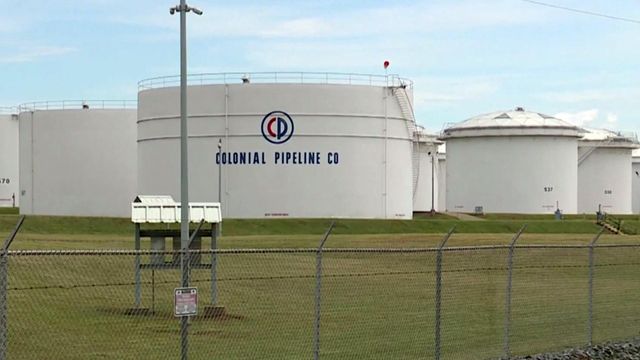Repairing the break in NC's fuel line
Getting gasoline from oil refineries on the Gulf Coast to a gas station in the Triangle is a complex process that, when disrupted, takes a while to restore.
Although the 5,500-mile Colonial Pipeline has been pretty much offline since a cyberattack over the weekend, a segment that runs through North Carolina has been operating under manual control since late Monday, moving gas between Greensboro and Maryland.
“Manually means going back to maybe some of the methods they used back in the 1960s when you didn’t have software and IT systems, and I think there is some reticence to operate that way," said Tom Kloza, chief analyst for the Oil Price Information Service. "There are a lot of pumping stations involved. There are a lot of valves involved. So, I think they are going to be very conservative."
Even with significant storage operations in Greensboro, only some of that gas will stay in North Carolina, Kloza said.
“You look at that and go, 'Why can’t the truckers just go and load up their fuel?' Those tanks were designed to be break-out storage to pump north. They are not designed to off-load into trucks," he said.
Tanker trucks have been filling up at a Colonial junction in Selma, but gas stations are running out before the fuel can get there. The online site GasBuddy.com reported that about three-fourths of stations in the Raleigh area had no fuel as of Wednesday.
"The governor has lifted weight retirements," said Gary Harris, executive director of North Carolina Petroleum & Convenience Marketers, "so each tanker can carry a little bit more fuel than they normally do."
On average, each tanker carries 8,000 gallons of gas. The storage containers at gas stations can hold anywhere from 12,000 to 24,000 gallons, meaning it takes up to three tanker trucks to fill a single gas station that has run dry.
Most vehicles have tanks between 12 and 20 gallons, so, using an average size, a full fuel reservoir at a gas station could fill about 1,125 vehicles.
But the number of fuel trucks making deliveries now is unknown. Harris said no one tracks that information because it's unregulated.
"It all fluctuates and depends on the driving environment at the time," he said. "It's just not a metric that anybody needs, to be honest with you. ... In normal circumstances, nobody really cares how many trucks are running on the road because there's plenty of fuel delivered all the time."
Some Triangle stations are now getting gas trucked in from the coast, Kloza said, adding that he expects fuel imports to increase to meet the demand.
“We’ll get a lot of excess gasoline from Europe. We’ll get some from South America [and] Canada," he said.
Both Kloza and Harris said they expect the market to return to normal soon. Colonial Pipeline officials said Wednesday evening that they had restarted operations and would have fuel flowing at normal rates within several days.
"Demand this week is incredible. It’s off the charts because of the hoarding," Kloza said. "It doesn’t take much to trigger manic behavior these days."
"The best thing to do is to buy normally, limit driving or consolidate trips," Harris said.











